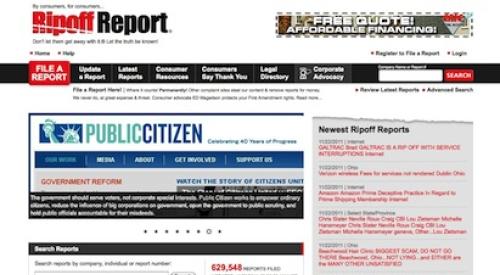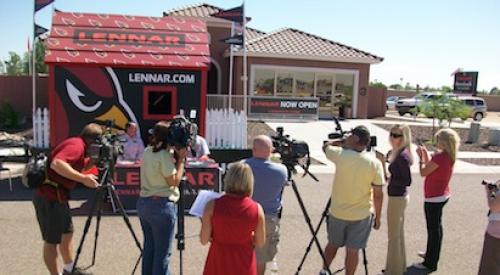|
Despite the avalanche of bad press about housing, it's still possible for builders — even small ones-— to generate good news.
Palmer Homes in Bend, Ore., planned to hold a dedication ceremony for a two-acre park at its new Gardenside development. But instead of inviting just a few local officials, Palmer hosted a community barbecue. In advance of the event, invitation postcards went to area residents, prospective home buyers and contractors. The media received a press release.
Not only did the event draw about 80 people, but the local newspaper and television station ran positive stories about Palmer's project. "You can't put a dollar value on the results," says Colleen McNally, marketing manager at the company, which builds about 100 to 150 homes a year. "But we got the good word out."
 |
Public relations is an important part of a well-rounded marketing strategy. Customers want to do business with builders who have a good reputation — something possible to create with positive press coverage even when the mood is gloomy. Another benefit: good news stories have more credibility than ads.
What's the first step?
Find company news and write a press release about it. Even though much of the housing coverage today has a negative slant, builders should send announcements about their achievements, experts say. It could be information about a new project, grand opening or executive promotion. News outlets like "feel good" stories, too. If you're building a playground for the local school, tell the media.
Generating coverage needn't be costly. Though big builders may have the budget to hire staff or a public relations agency, small and mid-size builders can usually handle the legwork themselves. "Self-created public relations is the most effective way to get the word out," says Tom Stephani, president at Custom Construction Concepts in Crystal Lake, Ill. He was recently featured on the cover of the real-estate section of the local newspaper in a human interest story about him and his partner, buddies since preschool.
A press release should include all the facts: who, what, when, where, why and how. Write in newspaper style, and don't make the release too promotional. It's not an ad.
Give your press release a news hook — a twist to interest reporters. Builder Robert Yanover of York, Pa., recently got good coverage of a new project by selling the story idea as affordable homes for blue collar workers.
If you're not sure you can write a press release, search for templates
online. (PrWeb.com is a good resource.) And check with your local builder's association. They often have sample materials or a staff member to help. Some associations even send out press releases for builders.
Or, just put the facts in a bullet-point e-mail, says Michael G. Cherenson, vice president at the Cherenson Group, a Parsippany, N.J.-based public relations firm that works with builders. "The most important thing is to get the facts out," Cherenson says. Your contact information should include a phone number, cell phone number and e-mail address. Always date materials; the media want timely information.
Also, try to include a photo. "We're always looking for good pictures," says Bill Sluis, editor of the New Homes section at the Chicago Tribune. Most photos are digital and sent via e-mail. Find out in advance what format is needed.
Above all, get to know the local reporters who cover the building industry. "Make a list of the `Golden 10' reporters," says Michael Levine, the Los Angeles-based author of "Guerilla PR: How You Can Wage An Effective Publicity Campaign ... Without Going Broke," a guide to low-cost public relations. Get those reporters' contact information and call them one by one. Find out what they're interested in and how you can help them. "Start slow. Focus on the basics," Levine says. And when a reporter calls, be available. Reporters work on tight deadlines, and if you don't return calls promptly, they'll call another source.
And finally, be honest in interviews, but don't forget to tell the good news. Cherenson sums it up best: "Public relations is doing good things and getting credit for it."
|











